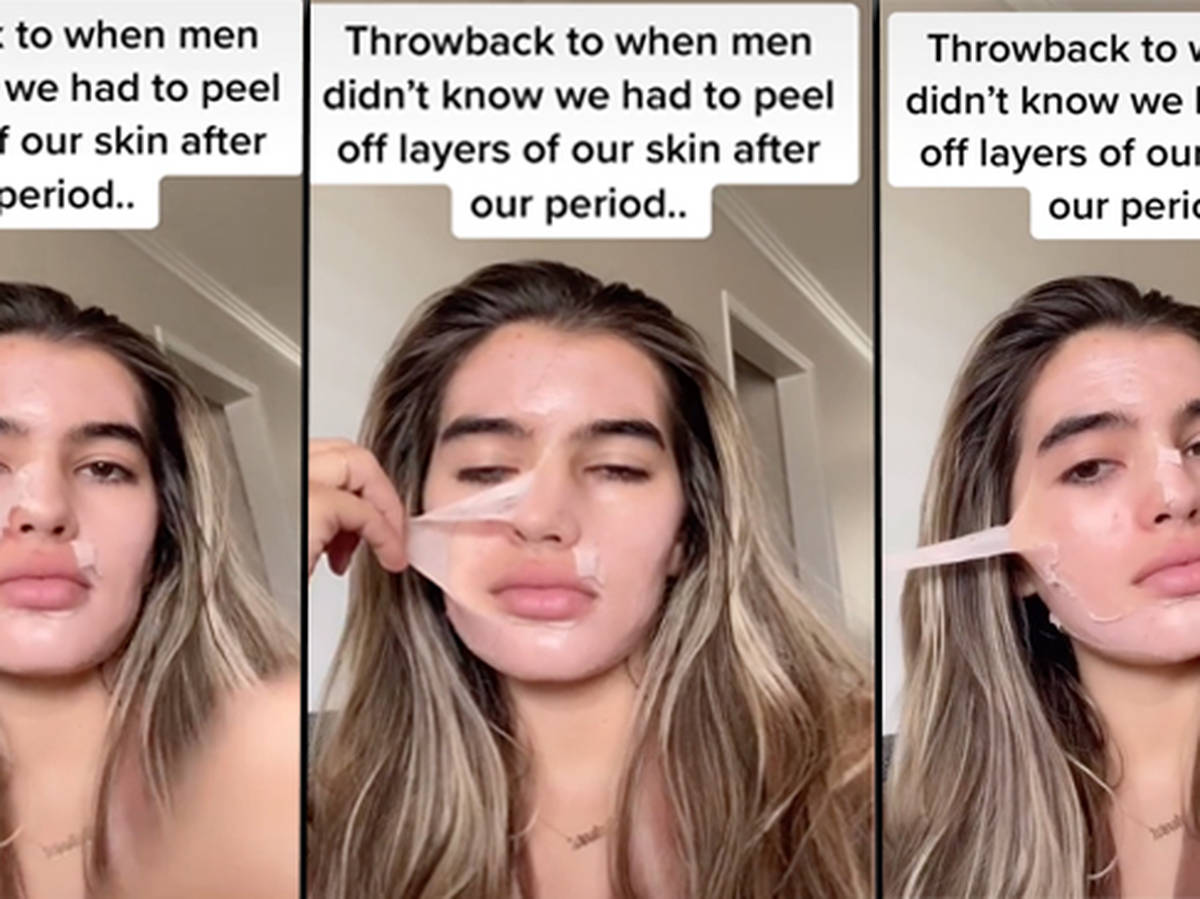Last Updated on June 18, 2025 by Jaclyn A. Neeley
Females do not shed skin after their period. Shedding of skin is a normal bodily process that occurs continuously.
However, during the menstrual cycle, the uterus lining is shed, not the skin. During the menstrual cycle, women undergo a monthly process in which the uterus lining is shed. This shedding is commonly known as a woman’s period. Contrary to popular belief, females do not shed skin during this time.
Skin shedding is a regular bodily process that occurs continuously, but it is not directly related to the menstrual cycle. Instead, the uterus lining is shed during menstruation. We will explore the menstrual cycle and clarify any misconceptions regarding skin shedding during a woman’s period.
Credit: www.tiktok.com
The Menstrual Cycle
The menstrual cycle is a natural process that occurs in females of reproductive age. It is an intricate interplay of hormones and physiological changes that prepares the female body for the possibility of pregnancy each month. One of the most noteworthy aspects of the menstrual cycle is the shedding of the endometrial lining, which is commonly referred to as a period.
Hormonal Changes
Hormones play a crucial role in the menstrual cycle. These chemical messengers regulate the entire process and ensure that everything happens as it should. The menstrual cycle is divided into four distinct phases: follicular, ovulation, luteal, and menstrual. Each of these phases is characterized by specific hormonal changes that dictate the events taking place in the female body.
Follicular Phase: This phase begins on the first day of a woman’s period and lasts until ovulation. During this phase, the hypothalamus in the brain releases gonadotropin-releasing hormone (GnRH), which stimulates the production of follicle-stimulating hormone (FSH) by the pituitary gland. FSH, in turn, stimulates the growth and maturation of ovarian follicles, which contain the eggs.
Ovulation: Around day 14 of a typical 28-day menstrual cycle, a surge of luteinizing hormone (LH) is released, triggering the release of an egg from the ovary. This process is known as ovulation and marks the halfway point of the menstrual cycle. Ovulation is a crucial moment as it is the ideal time for fertilization to occur.
Luteal Phase: After ovulation, the ruptured follicle transforms into a structure called the corpus luteum. The corpus luteum releases progesterone, a hormone that prepares the uterus for potential implantation of a fertilized egg. Progesterone thickens the lining of the uterus, creating a nurturing environment for a developing embryo.
Endometrial Shedding
After the ovulation and progesterone surge, if fertilization does not occur, the corpus luteum begins to degenerate. As a result, the levels of both estrogen and progesterone drop, signaling the onset of the menstrual phase. This drop in hormone levels causes the blood vessels in the endometrium to constrict, reducing the blood supply to the lining.
Without the necessary hormonal support, the endometrial tissue starts to break down and shed. The shedding of the endometrial lining, which is often accompanied by bleeding, is what is commonly known as menstruation or a period. It is worth noting that the shedding of the endometrium is not only limited to blood but also includes other tissue and mucus, making it a comprehensive process.
The duration and intensity of shedding may vary from woman to woman. Some may experience heavy flow, while others may have a lighter, shorter period. Factors like hormonal fluctuations, stress, and underlying health conditions can influence the characteristics of menstruation.

Credit: www.popbuzz.com

Credit: www.iflscience.com
Frequently Asked Questions Of Do Females Shed Skin After Period?
Does Women’s Skin Shed After Period?
Yes, women’s skin may shed after their period due to hormonal changes in their body. This shedding is a natural process and can be managed by exfoliating and moisturizing the skin regularly.
Why Is My Skin Peeling After My Period?
Skin peeling after your period could be due to hormonal changes that affect skin hydration and renewal. The drop in estrogen levels can cause dryness and flaking. Make sure to moisturize your skin regularly and stay hydrated to minimize peeling.
Why Does Skin Clear Up After Period?
Skin usually clears up after a period due to hormonal changes. Increased progesterone levels during the menstrual cycle can cause oil glands to produce more sebum, leading to breakouts. Once the period ends, hormone levels decrease, resulting in reduced sebum production and clearer skin.
Do Girls Shed Once A Month?
Girls do not shed once a month. They experience menstruation, where the lining of the uterus is shed, approximately every 28 days.
Do Females Shed Skin After Their Period?
After menstruation, many women experience a process known as skin cell turnover, where old skin cells are shed and new ones are produced.
Why Do Females Shed Skin After Their Period?
During menstruation, hormonal shifts can affect the skin’s natural exfoliation process, leading to the shedding of dead skin cells.
Conclusion
The shedding of skin after a female’s period is a natural occurrence due to hormonal changes. This process helps to remove the build-up of the uterine lining and can result in skin changes such as breakouts or dryness. Understanding this correlation can help females better manage their skincare routine throughout their menstrual cycle.
By maintaining a consistent skincare regimen and addressing any concerns that arise during the shedding process, females can support their skin’s health and appearance.


